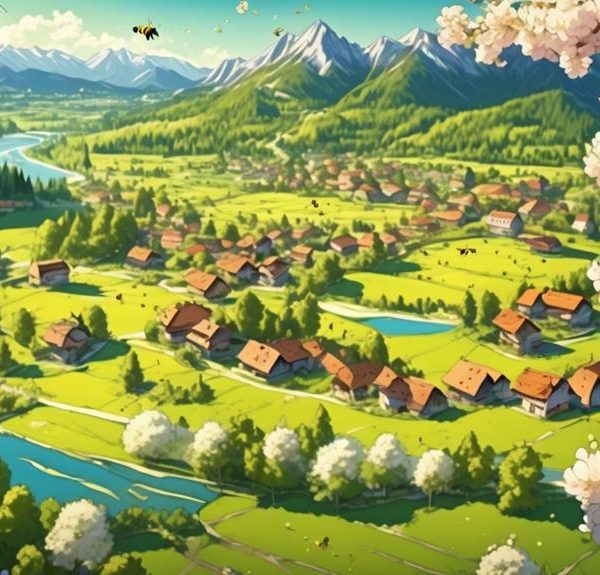Follow the intriguing journey of tracing the surprising origins and global spread of the robust carpenter bees.
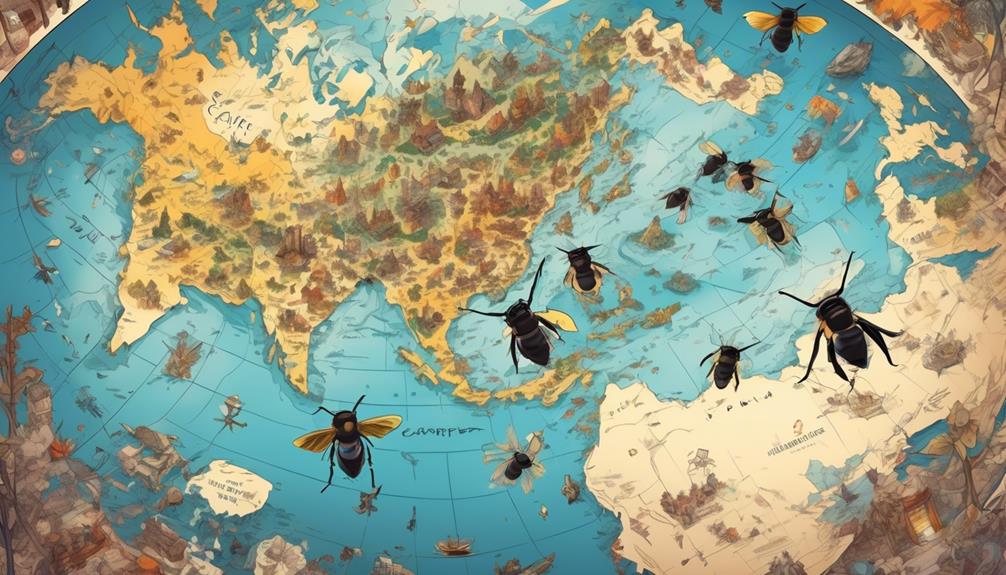
Where Are Carpenter Bees From?
Just imagine you're a medieval scribe, cataloging the world's creatures, and you come across the enigmatic carpenter bee.
You'd certainly wonder, where do these fascinating insects hail from?
Carpenter bees, notably robust and larger than their honeybee counterparts, offer a unique perspective on insect adaptation and survival.
These bees have a cosmopolitan distribution, but their origin story is not as straightforward as one might think. The journey of tracing their roots may take you to unexpected corners of the world, shedding light on how these insects have successfully colonized diverse habitats.
Intrigued? Let's embark on this journey together.
Key Takeaways
- Carpenter bees belong to the genus Xylocopa and originated from tropical regions of Southeast Asia.
- They have spread to all continents except Antarctica, with the highest species diversity in Asia.
- There are approximately 500 species of carpenter bees with unique geographical preferences.
- Carpenter bees are not picky about nesting sites and can bore into different types of wood.
Understanding Carpenter Bees
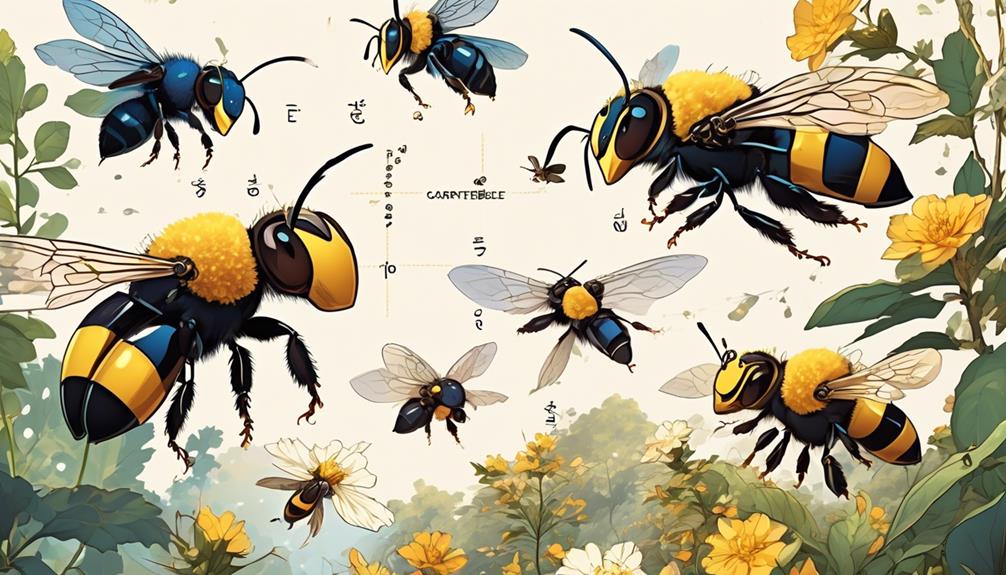
To fully comprehend the nature of carpenter bees, it's crucial to delve into their unique characteristics, origin, and behaviors, which set them apart from other bee species.
Unlike honey bees, carpenter bees are solitary creatures. Each female bee drills into wood to create a nest, demonstrating the woodworking skills that give them their name.
These bees have a cosmopolitan distribution, meaning they're found worldwide. They originated in the Holarctic region, encompassing North America, Europe, and Asia. Carpenter bees have a robust body, a shiny abdomen, and are generally larger than other bee species. They display sexual dimorphism, with males often lighter in color and lacking a stinger.
Behavior-wise, carpenter bees aren't typically aggressive. Males, despite their territorial behavior, can't sting, while females will only sting when directly provoked. Their diet consists of nectar and pollen, making them important pollinators.
Understanding these key traits of carpenter bees is essential for recognizing their role in our ecosystem. Despite their reputation as pests, due to their wood-boring habits, they contribute significantly to our environment. Knowing this, you can appreciate these fascinating creatures in a new light.
The Origin of Carpenter Bees

Now that you've got a grasp on the unique characteristics of carpenter bees, let's trace back their origins and find out how they became the fascinating creatures we know today. Carpenter bees, belonging to the genus Xylocopa, have a global distribution. They're believed to have originated from the tropical regions of Southeast Asia, and over time, they've spread to all continents except Antarctica.
To understand this better, let's take a look at a table that illustrates the distribution and diversity of carpenter bees:
Continent | Number of Species |
|---|---|
Asia | 130 |
Africa | 60 |
Americas | 37 |
Australasia | 10 |
This distribution highlights the adaptability of these bees to different climates and environments, from the tropical forests of Asia to the deserts of Africa, and the temperate zones of North America. Over millions of years, they've evolved distinct traits to survive in these diverse habitats.
Carpenter Bees' Global Distribution
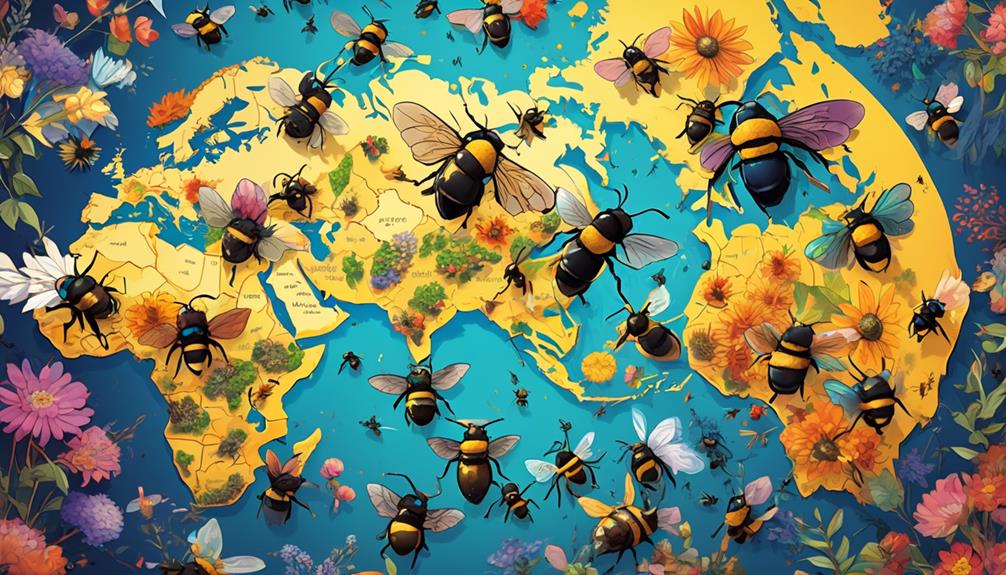
Spanning across continents, carpenter bees showcase an impressive global distribution, their adaptability enabling them to inhabit diverse climates and environments. You'll find them everywhere from North America to Asia, Europe to Australia. They've even been spotted in the high-altitude regions of the Himalayas, proving that cold doesn't deter them.
Each of the approximately 500 species of carpenter bees has its unique geographical preference. The large carpenter bees, belonging to the Xylocopa genus, are widespread in tropical regions, but you'll also spot them in temperate zones. The smaller Ceratina species, also known as small carpenter bees, are quite cosmopolitan, appearing in various habitats across the globe.
Their varied global presence isn't random. It's a testament to their ecological adaptability and resilience. Carpenter bees can survive in different habitats because they're not picky about nesting sites. They'll bore into a wide range of wood types, whether it's a tree in a tropical rainforest or a wooden structure in a suburban backyard.
Adaptation to Various Habitats
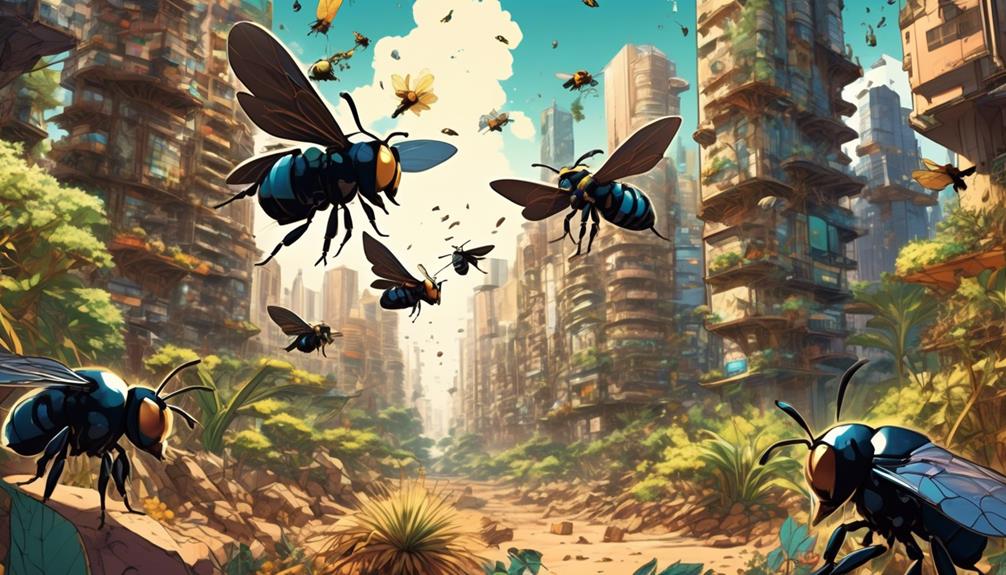
You'll find that the adaptability of carpenter bees to various habitats is nothing short of remarkable, with their survival strategies spanning from the selection of nesting sites to clever adaptations in their foraging habits.
These bees aren't picky about where they nest. They've been found in woods, gardens, and even urban settings, burrowing into untreated timber, deadwood, or bamboo to create their nests. This flexibility allows them to inhabit diverse environments worldwide.
Furthermore, their foraging habits demonstrate a certain resourcefulness. Unlike most bees, they're able to collect pollen from a wide variety of plants thanks to their robust bodies and strong jaws. This flexibility in their diet broadens their habitat options, as they're not tied to a specific type of vegetation.
Carpenter bees have also evolved to be resilient to fluctuating conditions. They aren't overly sensitive to changes in temperature or humidity, enabling them to thrive in both arid and humid climates. This versatility, coupled with their ability to adapt their behavior to changes in their environment, underpins their survival in a variety of habitats.
Impact of Human Activity on Their Spread

While the resilience and adaptability of carpenter bees allow them to thrive in diverse environments, it's also essential to consider how human activities influence their spread and proliferation. Urbanization, deforestation, and climate change, largely driven by human activities, have a significant impact on the distribution and population density of carpenter bees.
You may wonder, "How do these activities affect carpenter bees?" Here's a simple table to provide a clear picture:
Human Activity | Impact on Carpenter Bees |
|---|---|
Urbanization | Increases available nesting sites through wooden structures |
Deforestation | Reduces natural habitat, forcing bees to relocate |
Climate Change | Alters floral availability, affecting bees' food sources |
Pesticide Use | Can decrease population through direct harm |
Transport of Goods | Facilitates the spread of bees to new areas |
The continued spread and proliferation of carpenter bees are a testament to their adaptability, but it's crucial to understand that our actions significantly shape their habitats and survival. By acknowledging this, you can contribute to preserving these amazing creatures and the balance of our ecosystems.
Frequently Asked Questions
What Are the Primary Predators of Carpenter Bees?
You're curious about the main predators of carpenter bees, aren't you? Well, they've a few.
Birds, particularly woodpeckers, are known to feast on them. Spider species, such as crab spiders and orb-weaving spiders, also prey on these bees.
Additionally, certain insects like large robber flies and praying mantises have been observed attacking carpenter bees.
Lastly, some species of beetles and wasps are parasitic to carpenter bee larvae.
What Are the Distinguishing Physical Features of a Carpenter Bee?
You can distinguish carpenter bees by their size, color, and abdomen. They're typically large, ranging from 1/2 to 1 inch in length.
Unlike bumblebees, they're black, often shiny, with sparse yellow hairs. Their abdomen is smooth and shiny, lacking the fuzziness found on other bees.
Male carpenter bees have a white or yellow face, while females have a black face.
They're fascinating species, aren't they?
How Long Is the Lifespan of a Carpenter Bee?
You're inquiring about the lifespan of carpenter bees. Typically, these bees live for about one year. They emerge as adults in late summer, survive through winter, and then mate and die in spring.
It's the females who bore into wood to lay their eggs, while males guard the nest. However, in ideal conditions, they can live slightly longer.
It's a fascinating life cycle, isn't it?
What Kinds of Materials Do Carpenter Bees Prefer for Nesting?
You're probably wondering what materials carpenter bees prefer for nesting. Well, they're particularly fond of untreated or weathered softwoods like pine, fir, and cedar. They'll burrow into these woods to create tunnels for laying their eggs.
It's important to note they don't eat the wood, they simply remove it to make space. So, if you're noticing perfectly round holes in your wooden structures, it's possible you've got yourself a carpenter bee nest.
What Role Do Carpenter Bees Play in the Ecosystem?
You're probably wondering about the role of carpenter bees in the ecosystem. Well, they're vital pollinators.
While burrowing into wood to make their nests, they're also spreading pollen from flower to flower. This helps plants reproduce and grow.
Without carpenter bees, we'd see a decline in many plant species.
Conclusion
So, you've journeyed through the world of Carpenter bees, from their origins to their global distribution. You've seen how they've adapted to different habitats and the role human activity plays in their spread.
It's clear these buzzing creatures are remarkably resilient, making their home anywhere they can find wood.
As we continue to influence their habitats, it's crucial we understand and respect their importance in our ecosystem.

